Rank Species | Genus Stephania Higher classification Stephania | |
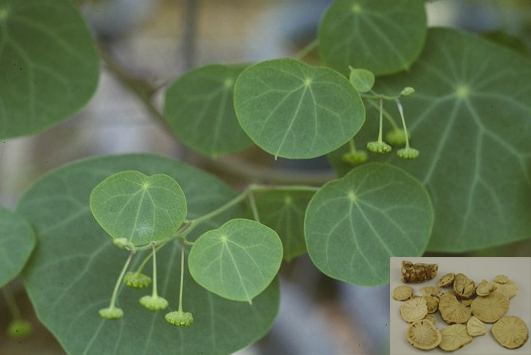 | ||
Similar Aristolochia fangchi, Stephania, Sinomenium acutum, Menispermaceae, Cocculus orbiculatus | ||
Stephania tetrandra is a herbaceous perennial vine of the Menispermaceae family native to China and Taiwan. It grows from a short, woody caudex, climbing to a height of around three meters. The leaves are arranged spirally on the stem, and are peltate, i.e. with the leaf petiole attached near the centre of the leaf. Its root is used in traditional Chinese medicine (TCM).
Contents
- Distribution and habitat
- Etymology in Chinese medicine
- Traditional medicine
- Chemistry
- Other herbs sometimes used as Fang Ji
- Warnings contraindications for substituted herbs
- References
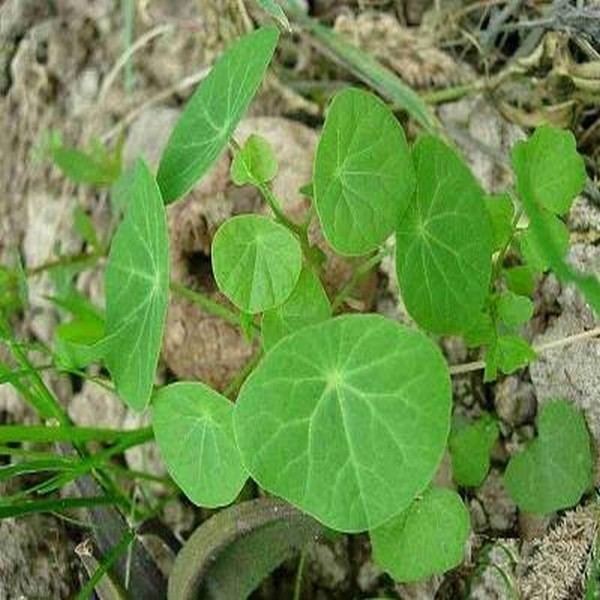
Distribution and habitat
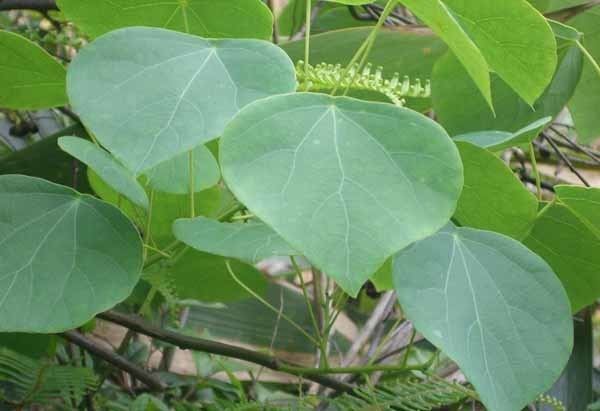
Stephania tetrandra occurs in shrublands at village margins, open fields, and roadsides in South Central and East China in Anhui, Fujian, Guangdong, Guangxi, Hainan, Hubei, Hunan, Jiangxi, and Zhejiang provinces, and in Taiwan.
Etymology in Chinese medicine

Stephania tetrandra is among the 50 fundamental herbs used in TCM. The standard pinyin according to the Chinese [Herbal] Pharmacopia of the People's Republic of China (Chinese: 中华人民共和国药典; pinyin: Zhonghua Renmin Gongheguo Yao Dian) is: fen fang ji (Chinese: 粉防己; pinyin: fěn fáng jǐ), but it is more commonly known as Han Fang ji (Chinese: 漢防己; pinyin: hàn fáng jǐ).
Traditional medicine
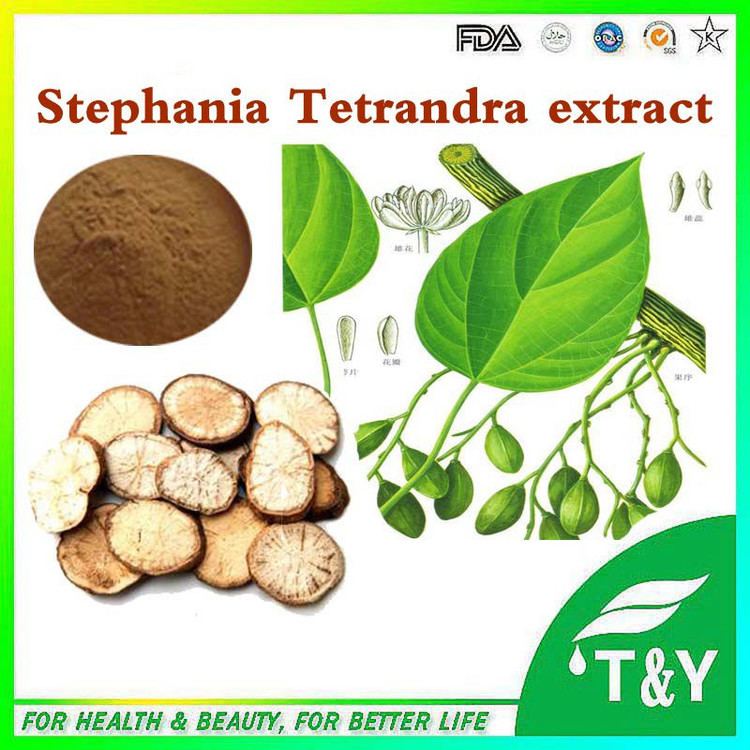
Fen fang ji is used in traditional Chinese medicine to dispel wind and dampness to relieve pain and to promote diuresis. It is classified as acrid, bitter and cold. The part used is the root.
Chemistry
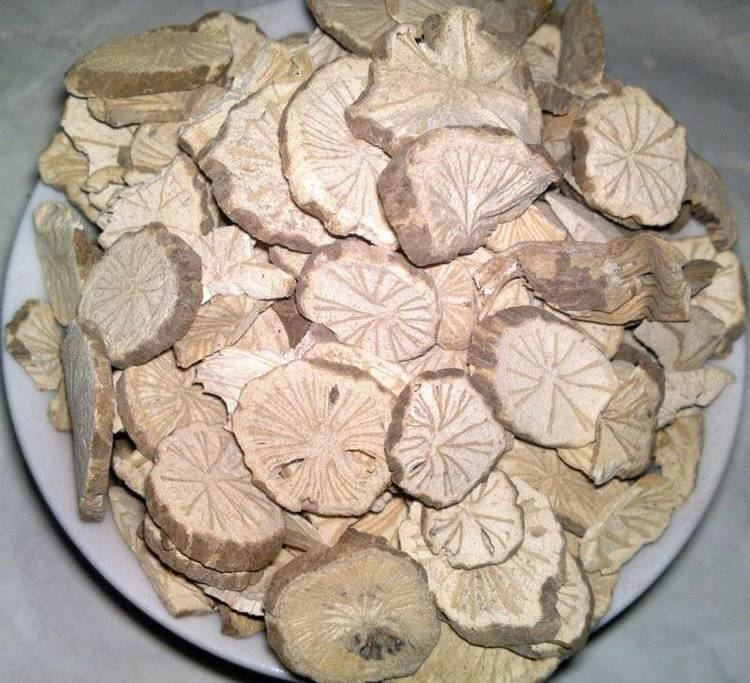
Stephania contains tetrandrine, a potent smooth muscle relaxant. Stephania alkaloids have curare-like action, and can selectively inhibit T-cell-dependent immune reactions. The root contains many isoquinoline alkaloids: tetrandrine (0.6-0.9%), fangchinoline (0.5%), cyclanoline (0.1%) and dimethyltetrandrine iodide (muscle relaxant). The root also contains flavanoids. The main active alkaloids are: tetrandrine (12 to 23 grams/kg) and fangchinoline (0.3–3 mg/kg). Also present are: dimethyltetradine iodide, cyclanoline, menisine, menisidine, oxofangchirine, stephenanthrine, stepholidine and bisbenzylisoquinoline.
Other herbs sometimes used as Fang Ji
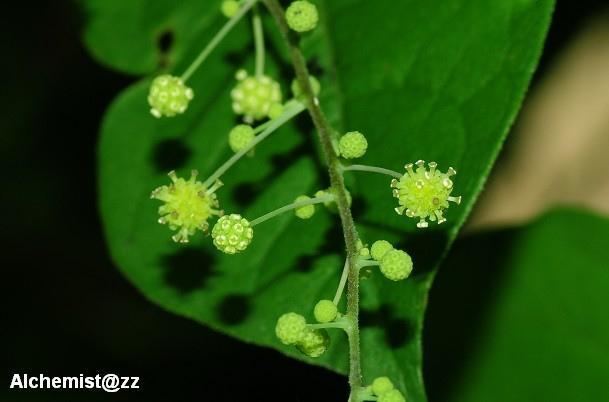
Other plants named fang ji (Chinese: 防己, roughly "snakebite remedy") are sometimes substituted for it. Notable among these is guang fang ji (Chinese: 廣防己; pinyin: guǎng fáng jǐ), Aristolochia fanchi, whose main toxic component is aristolochic acid, a potent carcinogen and nephrotoxin. Other herbs sometimes used as Fang Ji include Cocculus trilobus, C. thunbergii Orbiculatus, Aristolochia fangchi, and Simomenium actum (Japanese Han Fang Ji or Quinfengteng).
Warnings, contraindications for substituted herbs

When Aristolochia fanghi is substituted for Stephania tetrandra, the resultant guang fang ji preparations can contain toxic amounts of aristolochic acid Ingestion can lead to renal failure and even death; Aristolochia is used in TCM only with great caution. In May, 2000, the FDA began detaining any plants or medicines suspected of containing aristolochic acid, unless laboratory testing indicated they were negative for aristolochic acid. The traditional route of ingestion of guang fang ji is via water decoction. Since aristolochic acid has low water solubility, water decoction is believed to be a safer route than taking guang fang ji as an uncooked powder.
